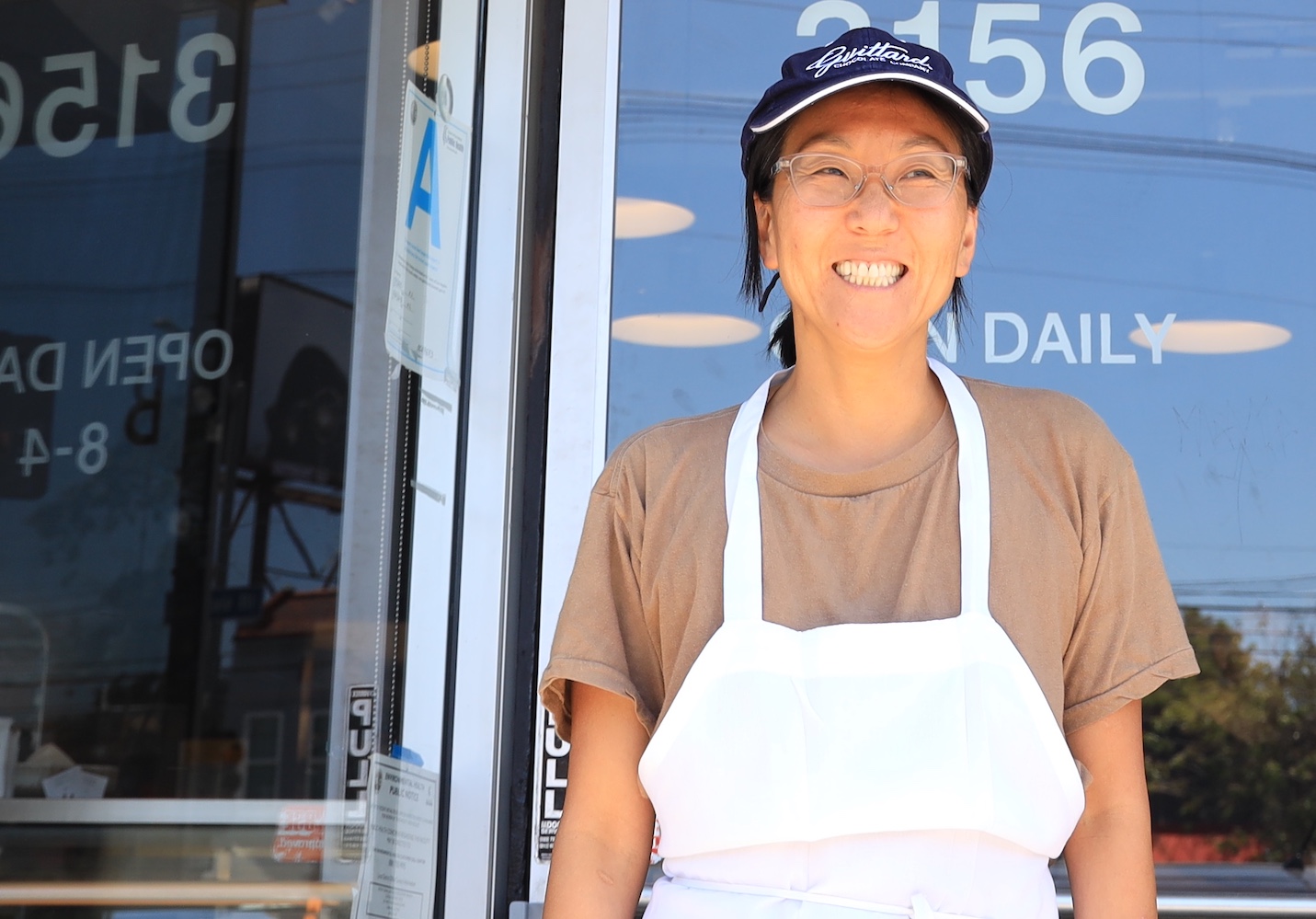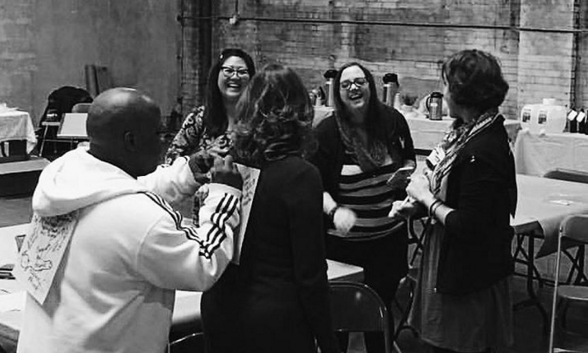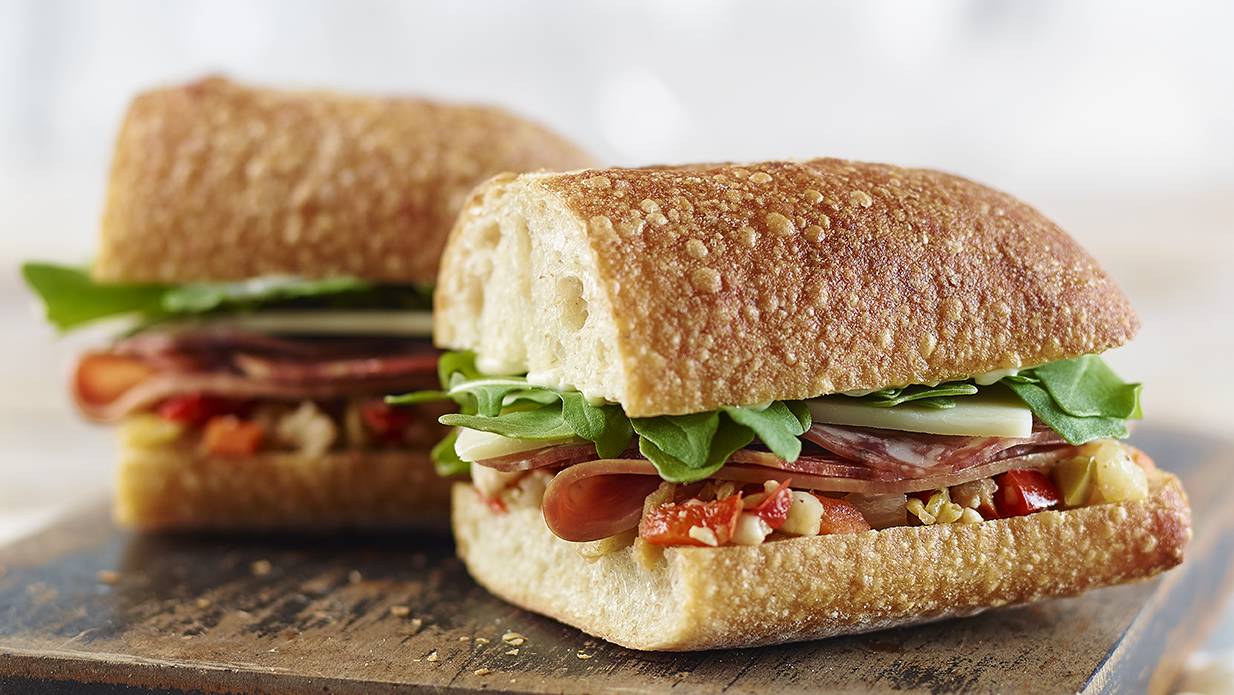
Yuju Yeo
By 10:30, the commuter coffee-and-pastry crowd has come and gone, but there’s still a line to the door at Proof Bakery in Atwater Village, a small neighborhood northeast of downtown Los Angeles. Customers crane their necks to see how many of their favorite items are left, because once they’re gone, they’re gone. They monitor the little tables, all of them full, to see who’s close to done; one woman gives up and turns an outdoor window ledge into a seat. It’s a more varied crowd than you might find at more stylish venues on more stylish if overpriced streets, and employees at the nine-year-old bakery know most of them.
Owner Na Young Ma, who is prone to thoughtful pauses and self-deprecating comments, sits quietly at a corner table and considers the meaning of success.
 Yuju Yeo
Yuju Yeo Nine years ago, Na Young Ma founded Proof in a location where local residents expected the type of place she wanted to open
Ma knows she has reason to be proud of Proof’s longevity, that loss is more appropriate in reference to places like Nicole Rucker’s lauded Fiona, the mid-city bakery and café that closed last August after only nine months.
But Ma has come to a sobering realization: Success and failure are not a binary system; a small-business owner never arrives at her destination, no matter how popular her place is, because growth demands more growth to survive.
She’s handled the linear challenge of increased demand, over time. Today’s Proof is not the same place it was nine years ago, when Ma showed up at four in the morning to start baking. It’s not the same place it was almost four years ago, when she hired her first pastry chef and started slowly to step away from daily baking, not the same as the summer of 2017, when she finally purchased a second oven.
The lateral challenge—expansion—has eluded her so far, for a simple reason: She won’t trade the bakery’s soul for more outlets, won’t grow until she’s sure that Proof can survive as a concept as well as a business. “What Proof stands for is the bakery as a reflection of the neighborhood,” she says. “That’s part of our identity, it’s a social thing. Kind of old-fashioned, but I still believe it.”
“Friends have asked me, why aren’t you expanding, what’s going on,” she says. “But in the current climate people want to do it too fast. After a year or two they want their next place, and the one after that. I don’t think I could have done it three years ago.” She is only starting to believe she can do it now.
 Mack Hill
Mack Hill From left to right, Proof Bakery founder-owner Na Young Ma, pastry chef Jun Tan, and manager Andrea Sung
Jun Tan, her current pastry chef, almost bailed at the start of his tenure, just over two years ago, after an all-night baking shift made him feel “like I was going to explode.” He’s not nostalgic for the often chaotic past, but he agrees: the transition hasn’t been easy.
“Change is good, but painful,” he says. “They don’t tell you that part.”
They do tell you you’re doomed without it. Bernadette Haas, director of operations at the 100-year-old Retail Bakers Association, says one thing distinguishes bakeries that live from ones that die: “the ability to run a business like a business.”
In 2010, Na Young Ma was a culinary school graduate at a crossroads: A restaurant pastry chef who wanted her own bakery, loved classic technique, and had a strong pragmatic streak. Atwater Village satisfied a lot of her requirements. It was near Glendale, where she and her family lived, it wasn’t yet gentrified, which meant lower rents, and she couldn’t find a decent croissant, which meant there was a demand waiting to be filled.
The space she chose had been a bakery several times since the first tenant, The Rollin’ Pin, opened in the early 1960s. That was part of its appeal. Local residents already expected the type of place Ma wanted to open.
“My thought is that a bakery, a neighborhood diner, a local grocery, a coffee shop—these are all places we commune at,” says Ma, whose family immigrated to Los Angeles from Seoul, South Korea when she was two. “Customers come here as a ritual. We see so many families coming here from pregnancy until a child is five, six, seven, eight years old. We have customers who take a picture of the baby with a chocolate croissant every year, to show how their child is growing. I think it’s wonderful.”
She’s bucking the tide—high-concept places with multiple outlets, to insure against customers who flit but rarely land. “It’s changed,” she says, of the way people dine out. “Now people just go once, and say, ‘Oh, okay, I don’t have to go back there again.’ I wish there were more restaurants that were a little modest, more neighborhoody. Some places now have a different style, they’re for your 21st birthday, for occasions—and they’re important too, but there are too many of those.”
Ma glances around the room. “Maybe not enough of these.”
The menu has always reflected a commitment to customer preference, even if they wanted pastries Ma doesn’t much like. She prefers a scone to a croissant, and a savory pastry to a sweet one, but gives her customers the croissant they seem to want, and a better one than they could find elsewhere.
She doesn’t care for chocolate chip cookies, either, but yielded to friends and co-workers who said she had to serve them. “I kind of like to stand out,” she says, “and I wondered, ‘What’s the big deal?’ But okay, if I was going to make them I’d try to make the best one possible, that was the challenge I put on myself.”
 Yuju Yeo
Yuju Yeo Proof’s signature chocolate chip cookies are $2.50 apiece and yield only 12 cents profit per cookie
Proof was a success; it was time for a new Proof.
Manager Andrea Sung started at Proof as part of the gradual overhaul, almost three years ago, determined to find ways to preserve the bakery as community center. She plants one fist on the table and twirls her other hand around it. “This,” she says, nodding at her fist, “Is Proof.” The swirling hand is Atwater Village.
“The primary value we provide is very human-to-human interaction every day,” she says, “it’s being connected to the community. Because we aren’t franchised, we feel part of Atwater’s identity, one of the pillars. We recognize people and they recognize us—versus a coffee shop that’s purely transactional.”
Jun Tan is Sung’s equivalent in the kitchen, hired as a pastry chef two years ago to help Ma overhaul the baking operation.
 Yuju Yeo
Yuju Yeo Jun Tan, Proof’s pastry chef
Last year was better than his first. This year, Tun says proudly, he’s ahead of his testing and tasting schedule. He has time to talk to farmers about what’s going to be available in the coming weeks; he gets to anticipate and plan, to hold staff tastings and experiment with a vegan Thanksgiving stuffing.
Together, they realized that getting smaller might help them get bigger. Ma sold the lease to the commissary building and moved that part of the business to the bakery kitchen after Proof closes at four in the afternoon, to take advantage of the otherwise empty space.
She resists raising prices because she worries about how regulars will react to an extra quarter for a cookie. At $2.50, the signature chocolate chip cookie is cheaper than much of the competition, and yields only 12 cents profit per cookie. It isn’t much of a revenue source, not even with average bakery sales of 700 to 800 per week, more if there are catering orders.
But Ma feels protective of the people who’ve gotten her here—even as Sung chuckles about the ongoing debate about the price.
 Yuju Yeo
Yuju Yeo Ma is more of an administrator learning to delegate tasks to some of the 22 employees who depend on her
“It is a bargain,” says Sung. “Maybe next year.”
The era of a bakery like Proof on every corner is over, Haas says, but the category is a pretty healthy one for the survivors: Sales have increased annually since 2010 and are predicted to climb through 2023, according to numbers from the United States Department of Commerce (DOC). The number of outlets is slightly shakier—there was a dip in 2015, and the association predicts another, smaller drop over the next two years —but by 2022 there should be another rebound.
Ironically, we may have franchises to thank. Paul Freedman, author of American Cuisine and Ten Restaurants that Changed America, believes that independent bakeries have come back, in part, “because they provide a community function, more personal service, that people are actually willing to pay for. Even Starbucks, monolith that it is, hasn’t destroyed independent coffee shops with their combination of the artisanal, the unpredictable, a certain kind of atmosphere—and the opportunity to have pastries that taste better.”
There’s a demand for high-quality idiosyncrasy. “We do see sustainability in our business now,” says Haas. “People want better ingredients, they want to know where the baker is from, they want someone to say, ‘Hey, Julie, how are you?’ We’ve seen a shift, really, back to the original model of the neighborhood bakery.”
But the landscape in major cities has changed drastically since Ma signed her lease. “What’s happening in Los Angeles and Manhattan is that we’re running out of non-gentrified neighborhoods,” says Freedman. “There’s nowhere to go.”
Or if there is, rents are higher, which is where a small business gets stuck. Ma’s lease runs out in 2031, but until then low rent keeps her in business. Higher rents in other neighborhoods, on the other hand, keep her from expanding.
 Yuju Yeo
Yuju Yeo Higher rents in neighborhoods other than Atwater Village have kept Ma from expanding
Occasionally a baker gets so popular that demand makes expansion seem an imperative. Christina Tosi worked for chef and Momofuku restaurant group founder David Chang before she opened her first Milk Bar in 2008. Since then she has collected two James Beard awards, appeared as a MasterChef judge, opened 16 Milk Bar outlets—and on Saturday will open the 17th, a mammoth 4,000-square foot operation in Manhattan’s Flatiron district.
Last month Tosi secured Series B funding from Sonoma Brands to bring her line of products to grocery stores, but that’s the exception that proves the rule, a concept that is both deeply personal and resilient enough to survive replication. Ma, and other lower-profile, single-location owners like her, are just big enough not to be able to get that big.
“It’s not that I don’t want to grow,” she says. “I want to grow, but I want to do it healthily.” Someday there could be multiple Proofs, but almost surely in the single digits; what she’s created doesn’t seem to her elastic enough to stretch further than that. Or maybe Proof will continue to thrive in Atwater Village, period. The bakery’s personality is a point of pride; Ma isn’t going anywhere unless she believes it will survive intact.
 Yuju Yeo
Yuju Yeo Ma has started baking again and is developing gluten-free and vegan items because her customers keep asking for them
“People asked for them in the beginning but I didn’t learn how to make those things,” she says. “I’m a traditionalist. But now it’s a practical business decision. I’m challenged by it, that’s the research and development I want to do.”
Up to a point. She considers her new recipe line and her desire to satisfy her customers, and realizes that there is in fact a line she won’t cross.
“I’m not going to make a vegan croissant,” she says.










